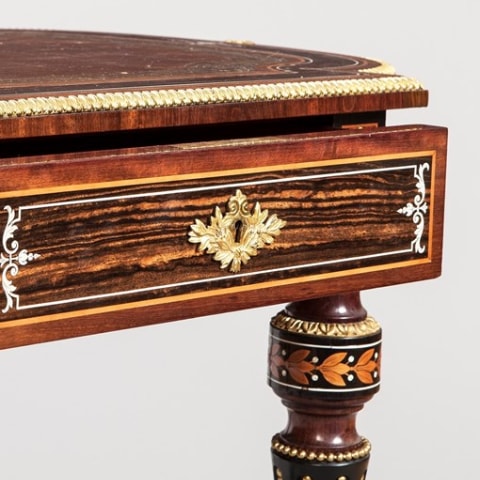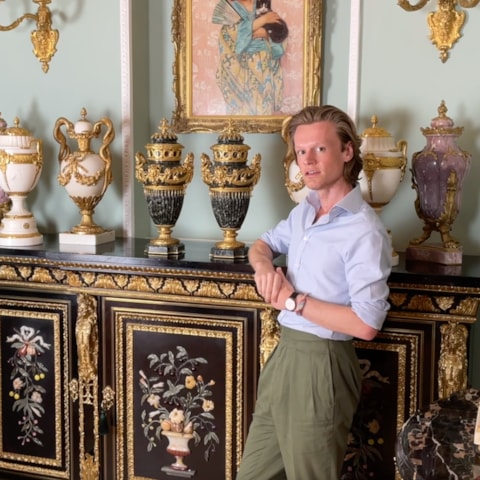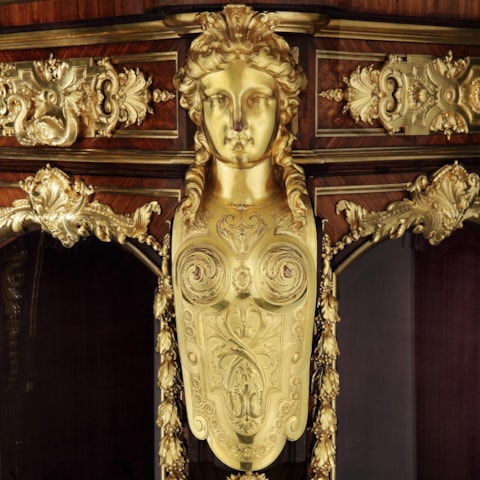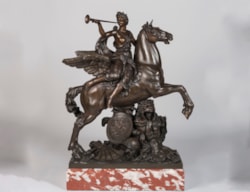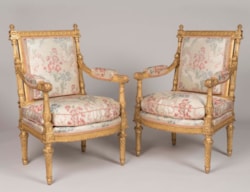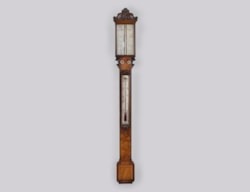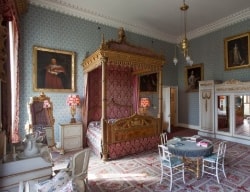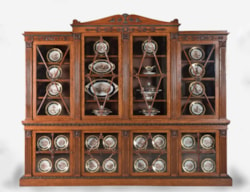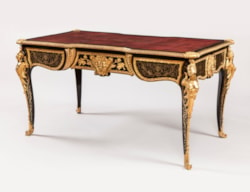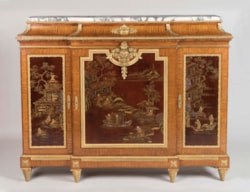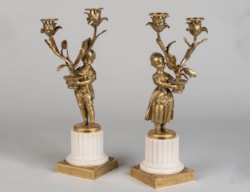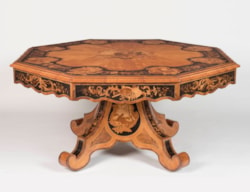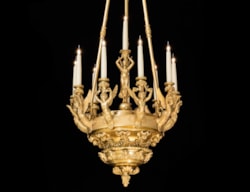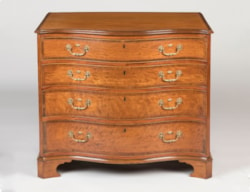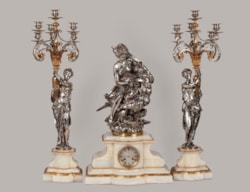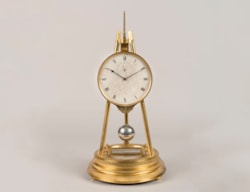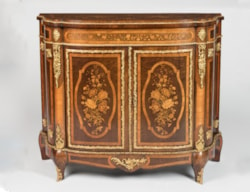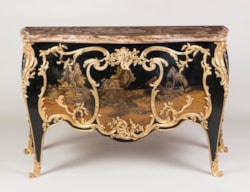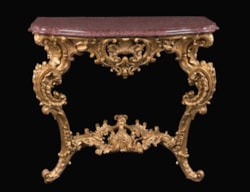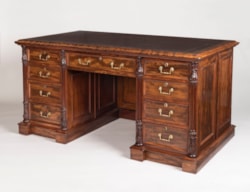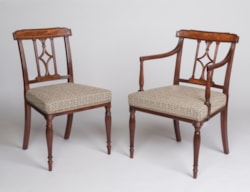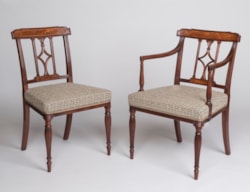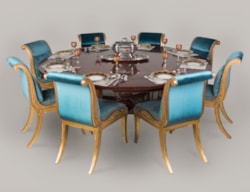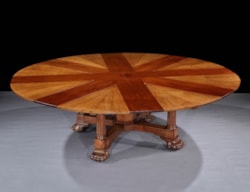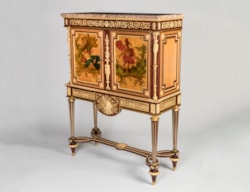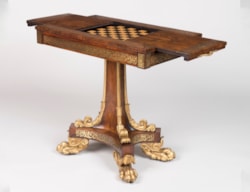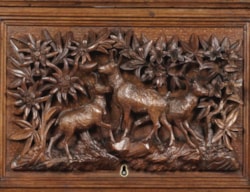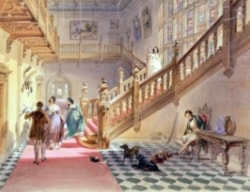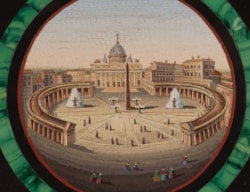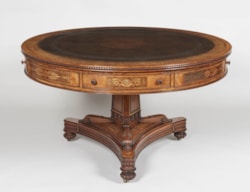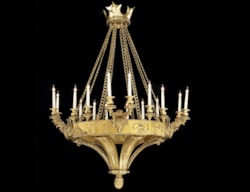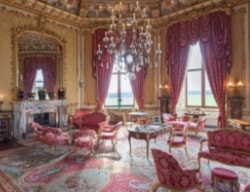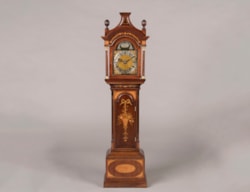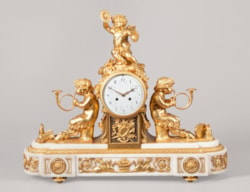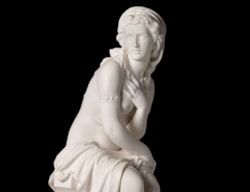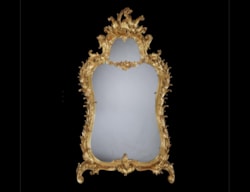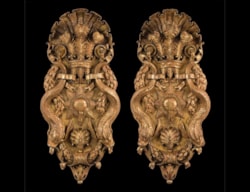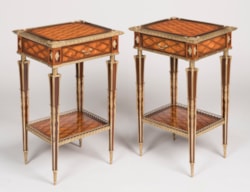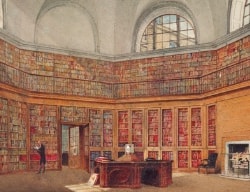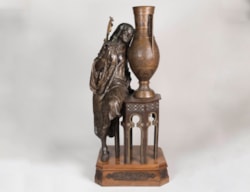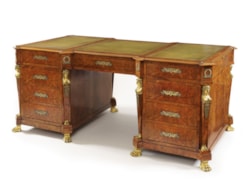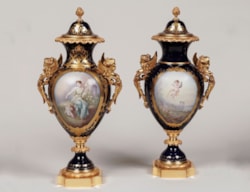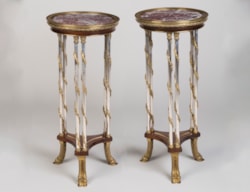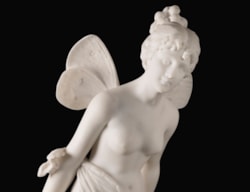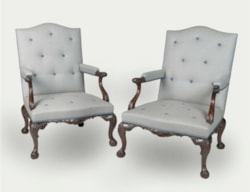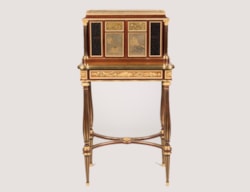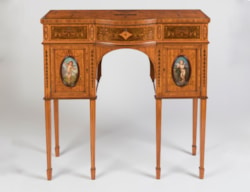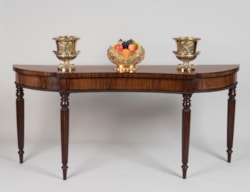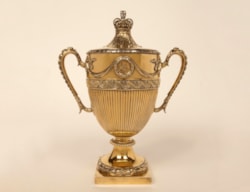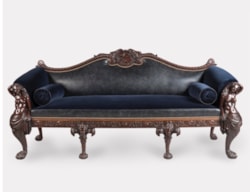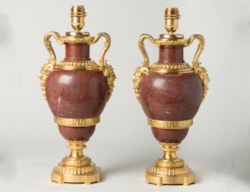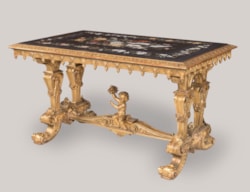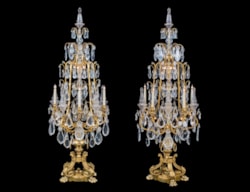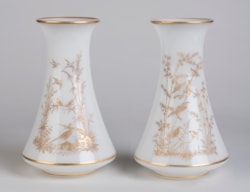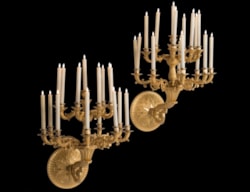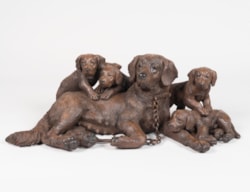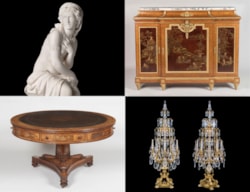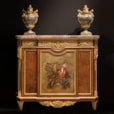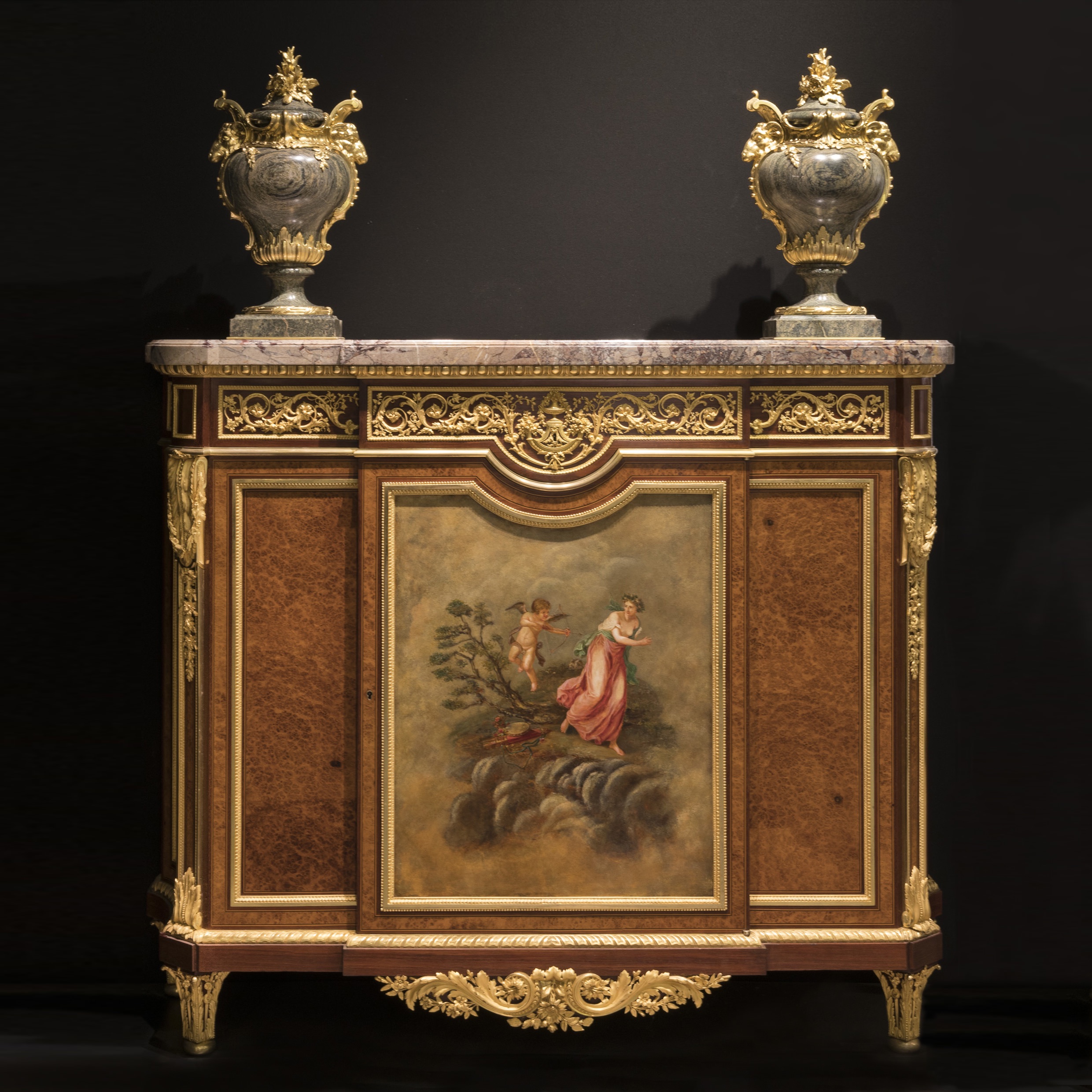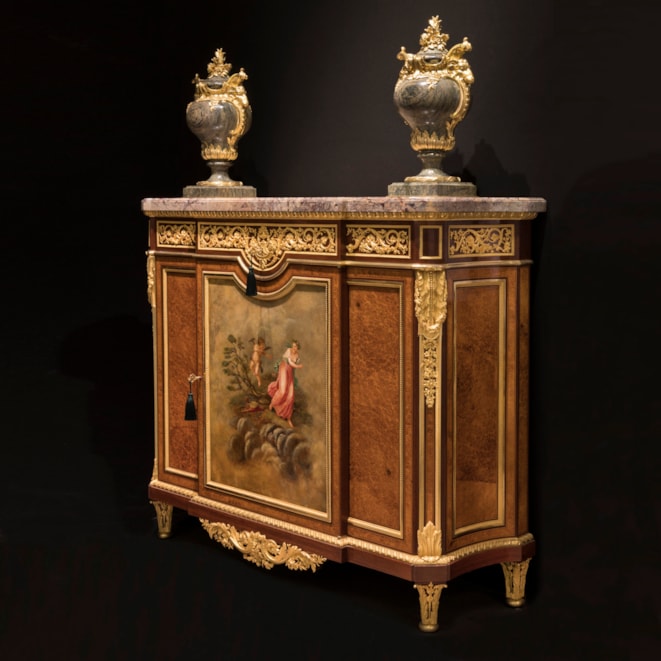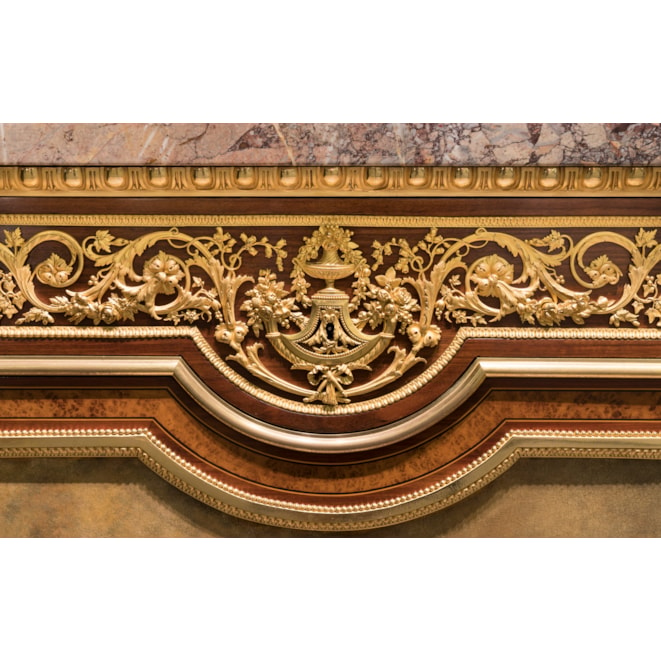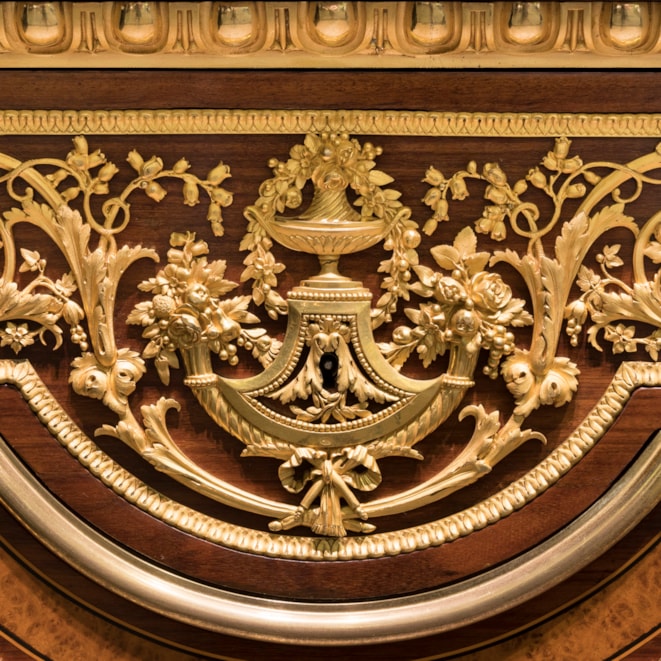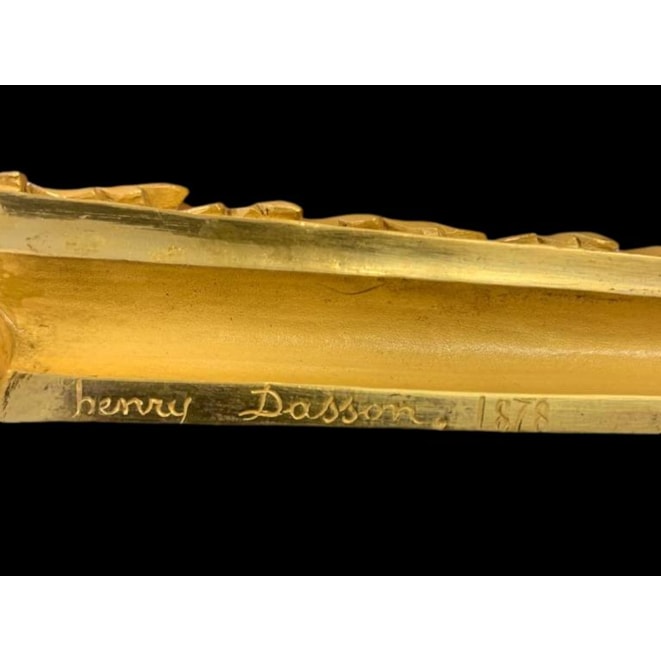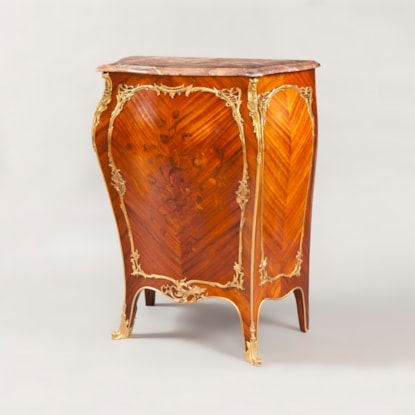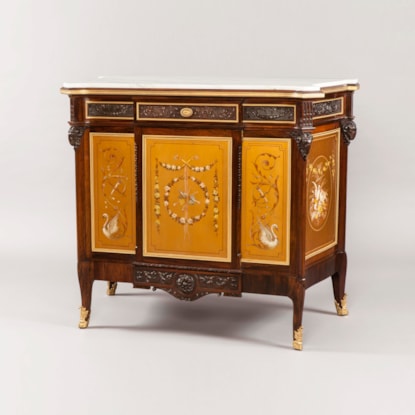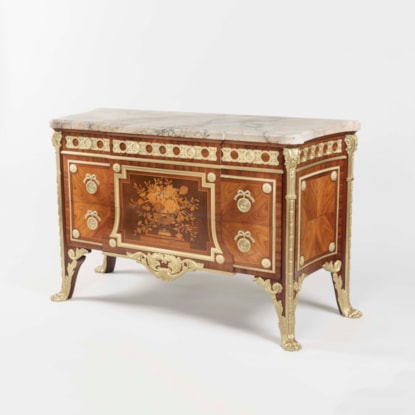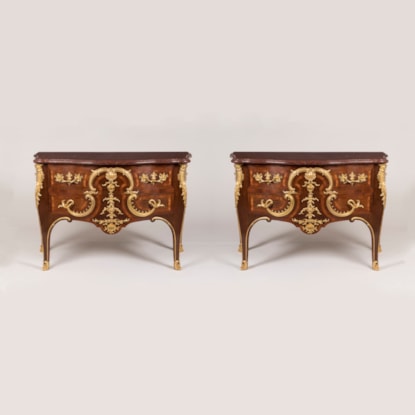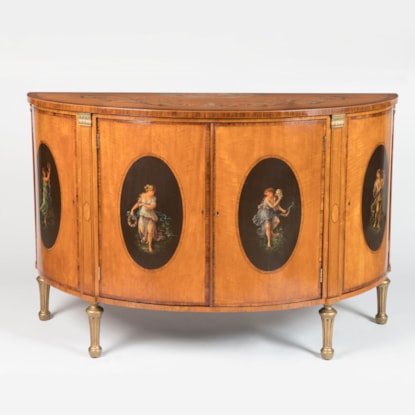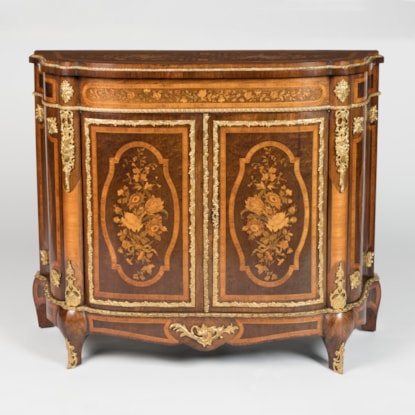Collection / Commodes & Chests / Commodes
An Important Side Cabinet By Henry Dasson
An Important Side Cabinet By Henry Dasson
Dimensions: H: 48 in / 121 cm | W: 58 in / 146 cm | D: 18.5 in / 46.5 cm
An Important Side Cabinet By Henry Dasson
Constructed in amboyna and purpleheart, with ebony and boxwood stringing, dressed with fine ormolu mounts. Rising from tapering and bronze collared block feet; the lower apron has a strong gilt bronze mount of stiff leaf acanthus foliates and volutes; above, the breakfront rectangular form having canted corners incorporating fine wood inlays and acanthus ormolu mounts issuing pendant foliage; the door has a Vernis Martin panel depicting Cupid and Psyche framed within a pearl decorated bronze frame, enclosing a shelved interior; the frieze drawer has a running rinceaux band and a monogrammed double-cornucopia escutcheon, topped by a bronze egg-and-dart frame below the Sarrancolin marble top. The mounts stamped variously "HD", with the reverse stamped twice "Henry Dasson 1878," and the full signature of the maker appearing on the ormolu flanking the acanthus cusp.
French, dated 1878
Henry Dasson was widely celebrated for his original adaptations of the designs of the ancien regime, having a particular appreciation for the work of Jean-Henri Riesener. Although not an exact copy of a known Riesener model, Dasson has skillfully combined elements from Riesener's repertoire, calling specifically on the design the latter supplied to Louis XVI at Fontainebleau. The acanthus cusps on the canted corners were a motif employed by Riesener and found on other pieces by Henry Dasson handled by Butchoff. Dasson also employed the elaborate double-cornucopia escutcheon appearing on various Riesener pieces, such as the Writing Table (14.5.74) and commode (18.5.71), both today in the Frick Collection.
Henry Dasson (1825-1896) established at 106 Rue Vielle du-Temple, was one of the most celebrated Parisien bronzier ebenistes. His work is renowned for the fine quality of the metalwork, utilising the designs of the ancien regime, and adapting them to conform with the needs of the times. He participated at the Expositions Universelles in 1878 and 1889 and examples of his work were purchased by the English Royal Family.
You may also like

 Vip access
Vip access

 Favourites
Favourites






